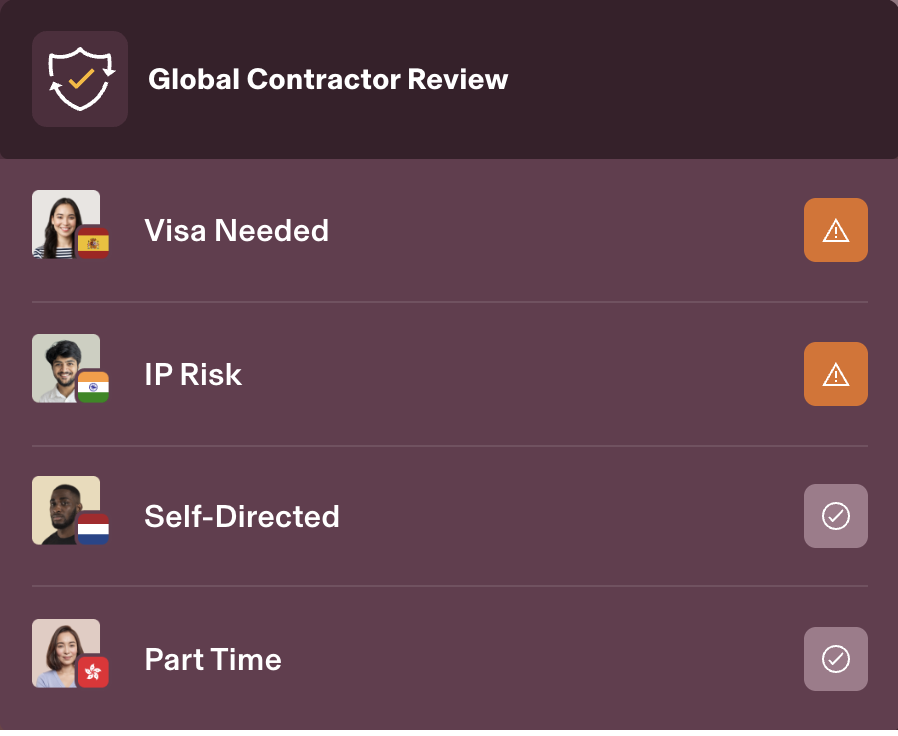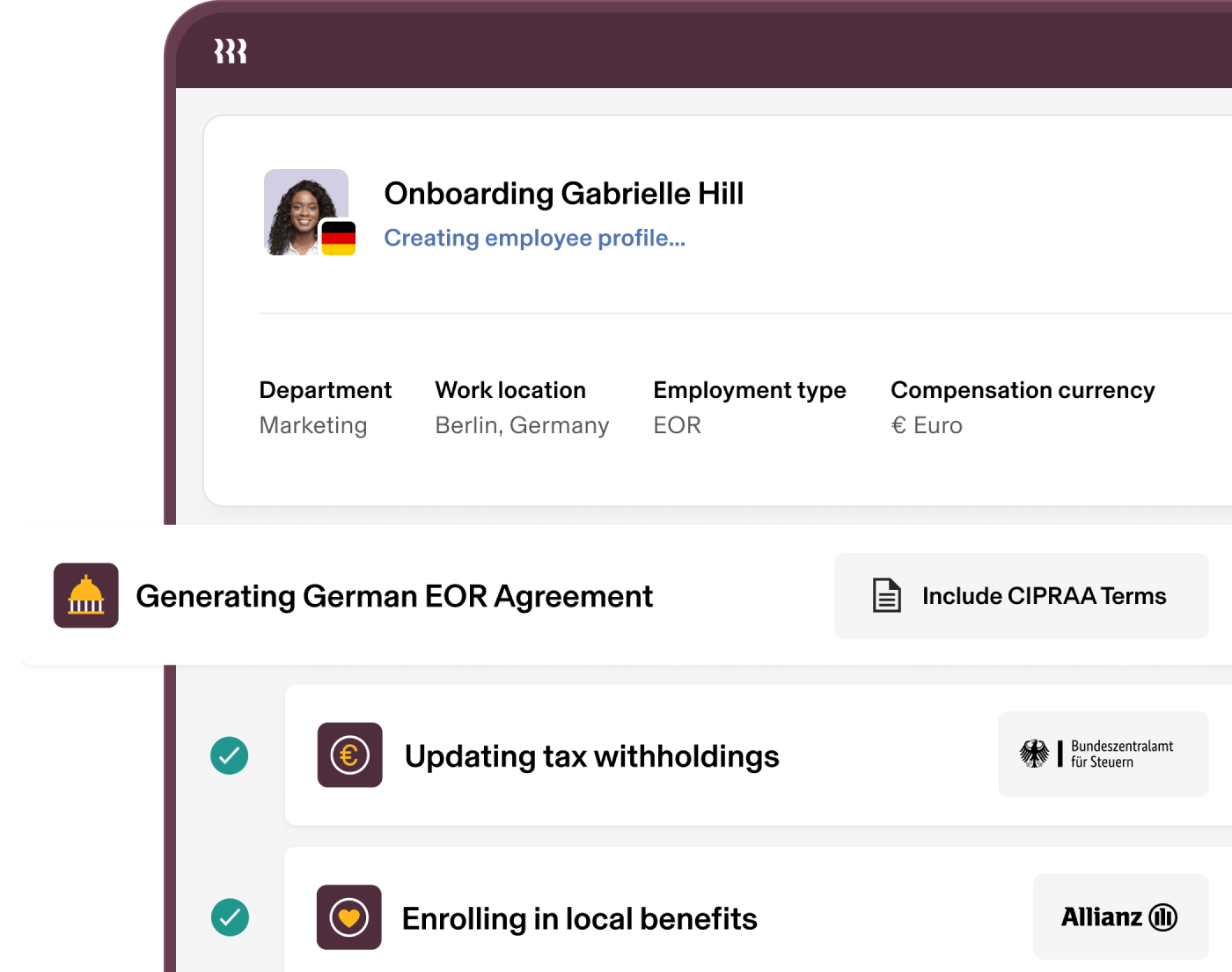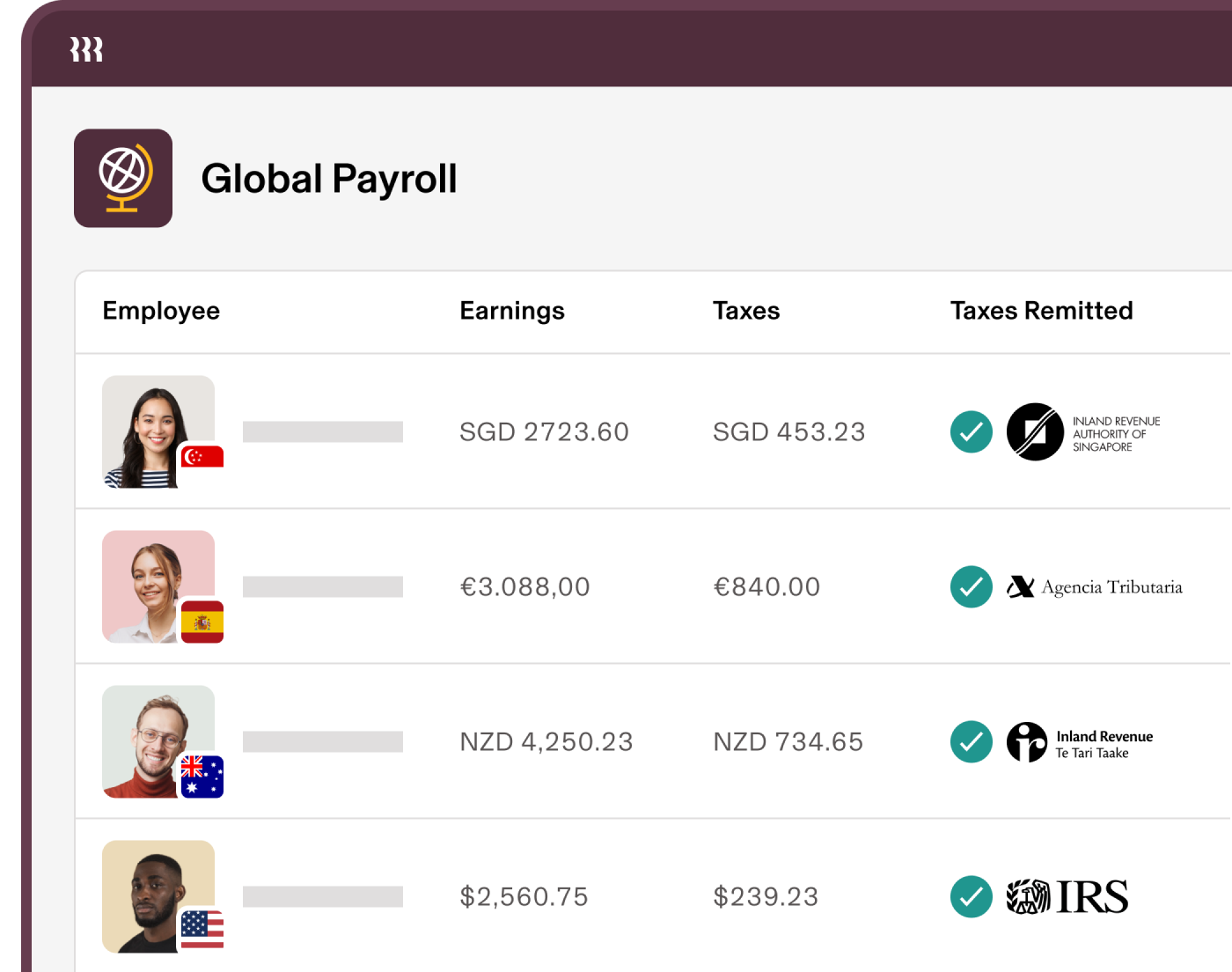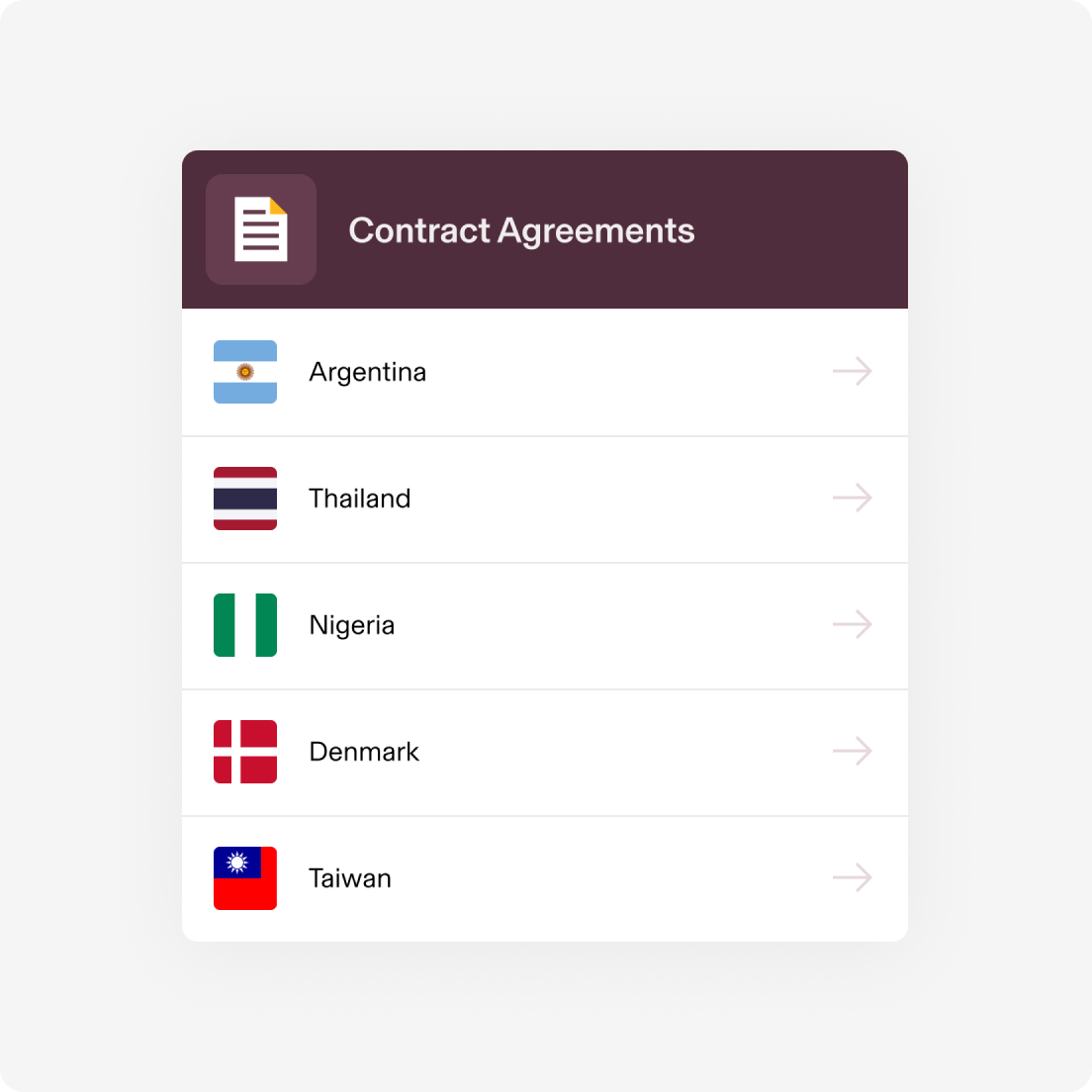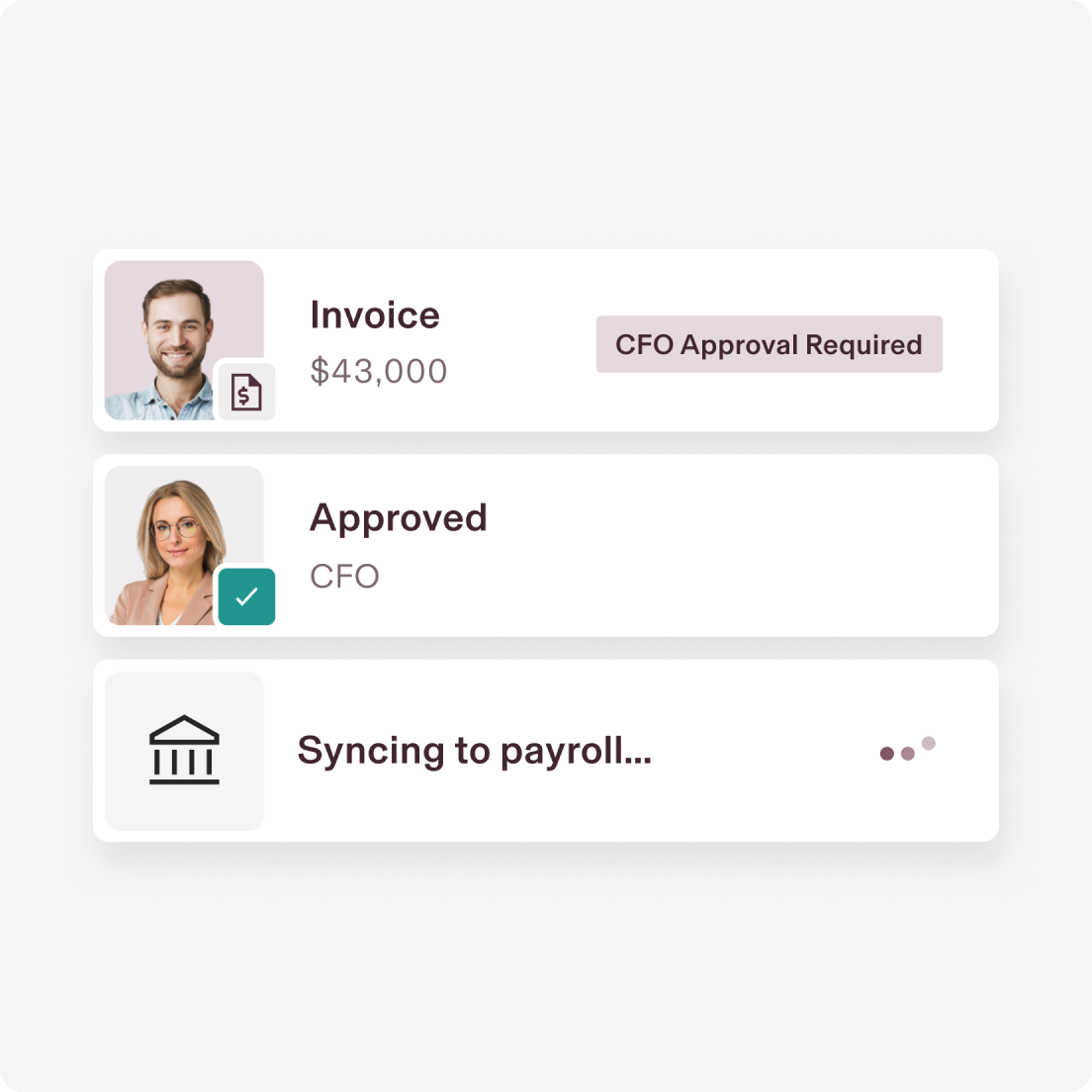Wann sollten Freelancer zu Mitarbeitern werden?
Unternehmen sollten regelmäßig prüfen, ob Freelancern eine reguläre Stelle angeboten werden sollte, um kostspielige Risiken einzudämmen, die das weitere Wachstum bedrohen können.
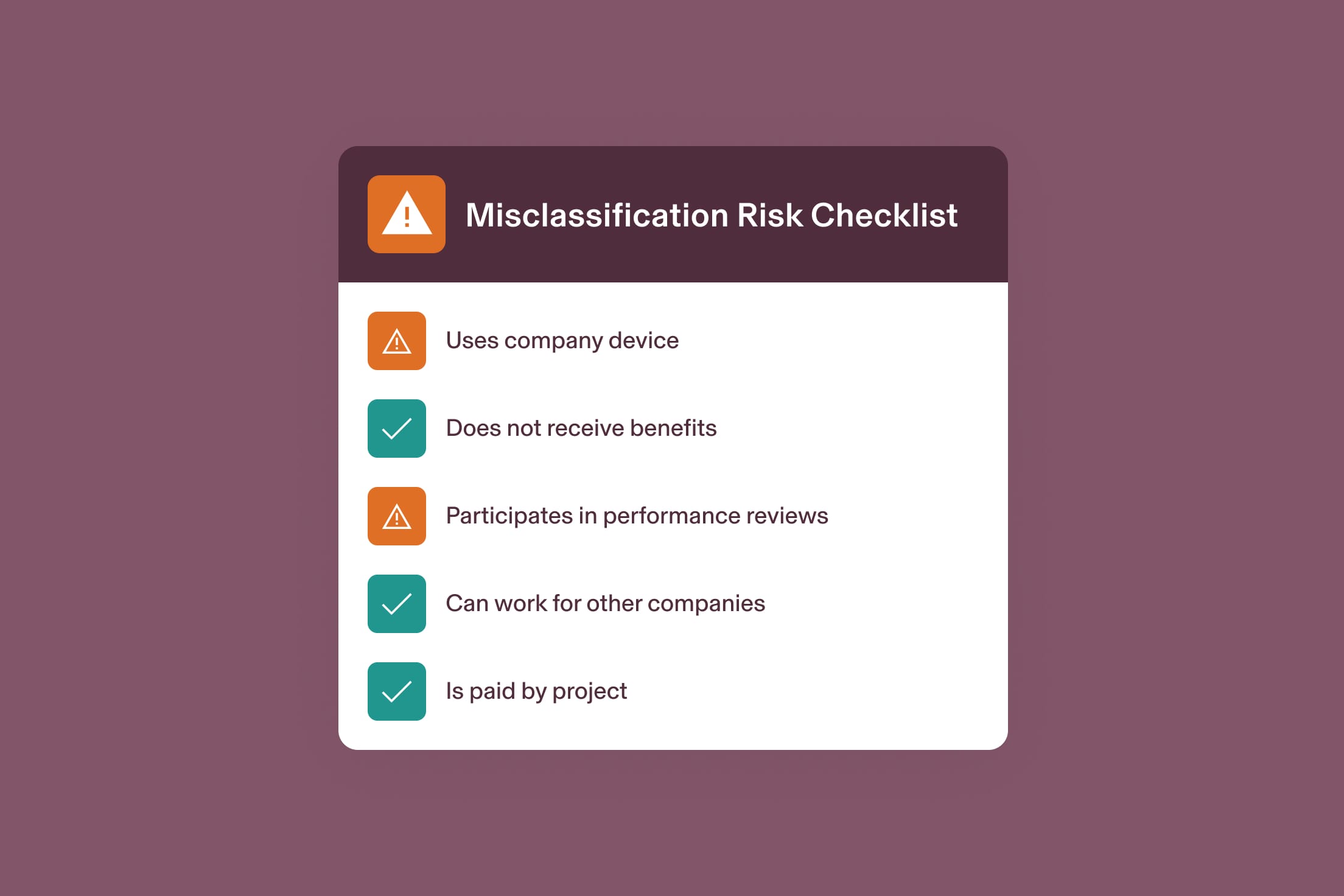
71 % der HR-Profis sind der Meinung, dass Investoren vor Start-ups mit nachgewiesenen Compliance-Problemen eher zurückschrecken. Überprüfen Sie daher kontinuierlich Ihre Compliance-Abläufe, um bei Finanzierungsrunden oder Fusionen und Übernahmen zu überzeugen.
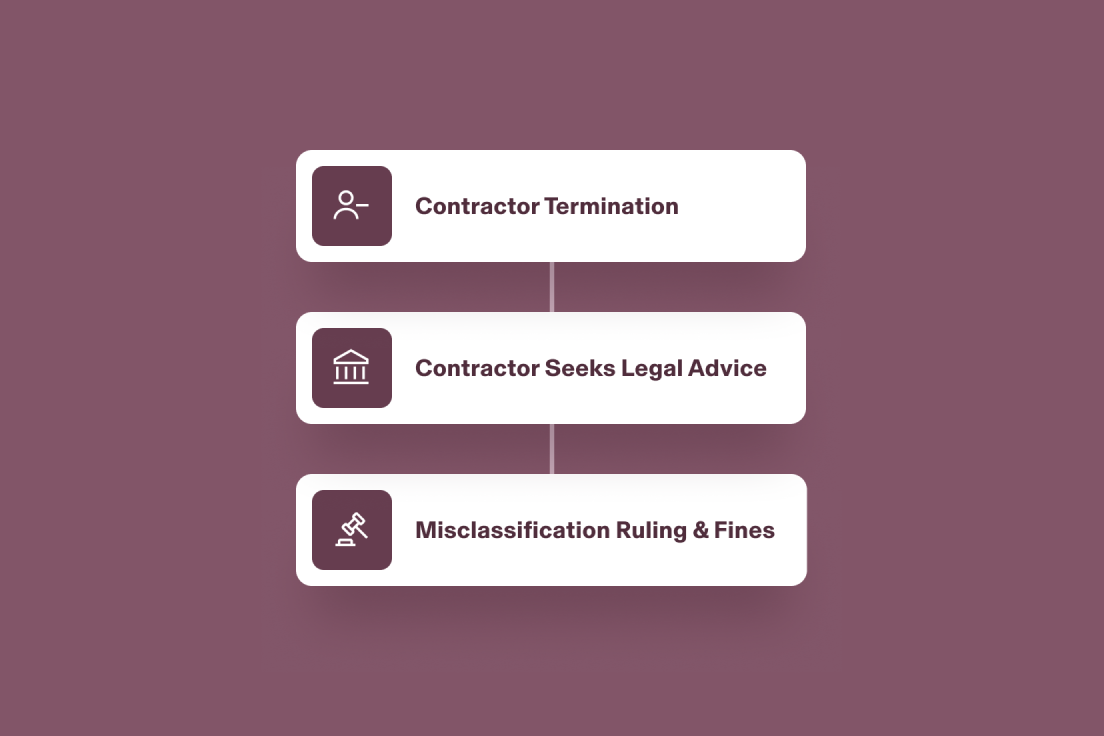
Ein falscher Klick und ein ausgeschiedener Arbeitnehmer könnte aufgrund einer Fehlklassifizierung klagen – auch wenn die Person sich dazu entschieden hatte, als Freelancer zu arbeiten. Der proaktive Umgang mit Risiken schützt Sie vor späteren Rechtsstreitigkeiten.











































































